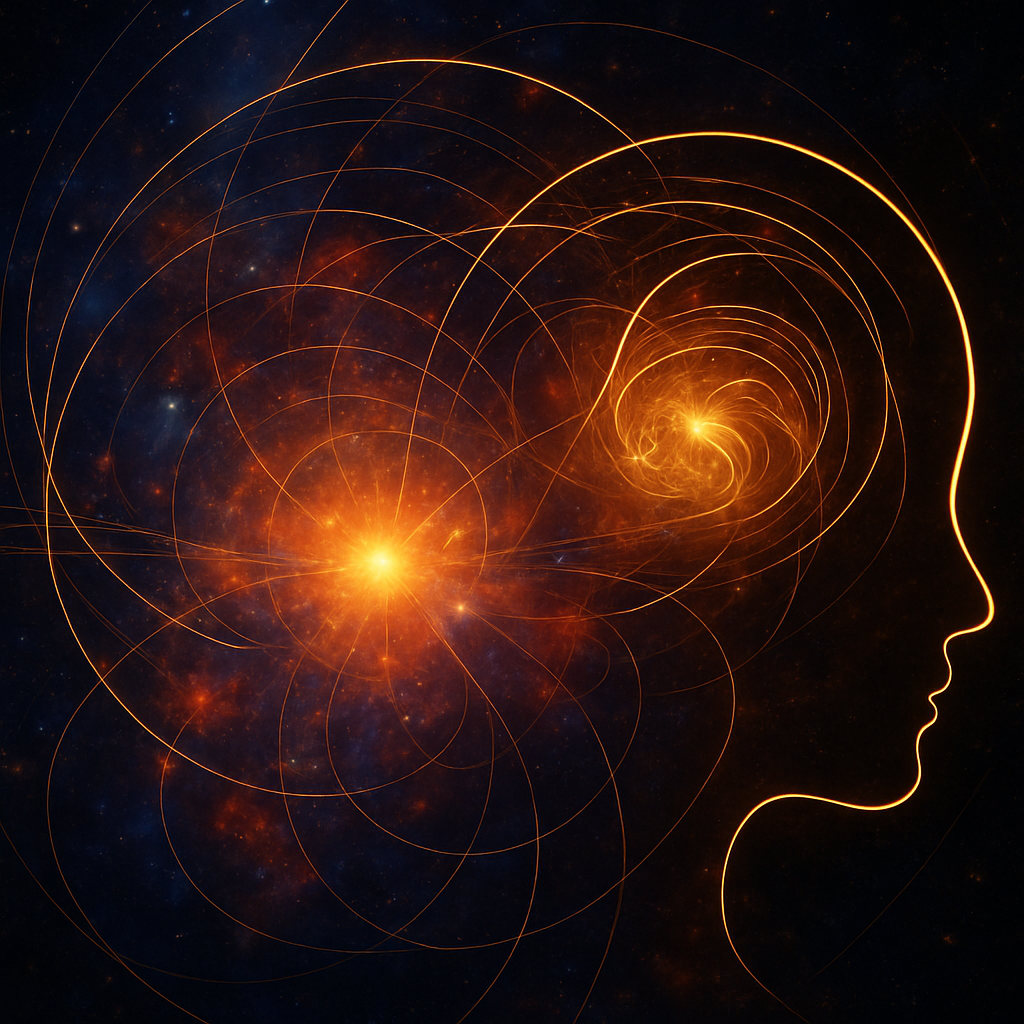I and 1
“I” and “1” share a strange kinship.
Each is a point drawn on the unmarked page, a first utterance that summons a world.
When 1 is declared, it does not stand alone.
It pulls into being everything that is not-1, and with it the entire architecture of number.
Likewise, when “I” is felt, the field of all that is not-I rises around it like a vast coastline around a single stone.
Neither 1 nor I exist in isolation.
They are apertures through which infinity enters.
The Zero That Co-Arises
The moment 1 is spoken, 0 appears with it.
They are twins, arising together from the same unspoken source.
Zero is not mere absence.
It is the surroundingness, the open field in which any point can appear.
It is the ungraspable totality of all that is not this—
the silent reservoir of all other numbers besides 1.
And this zero is not only the ground;
it is also the space between.
Between 1 and 2 is a gap—simple, crisp, almost negligible.
And yet that same gap holds an infinite sea of real numbers, unbounded in their density,
a continuous expanse masquerading as a thin line.
The space between us is like that:
both a definite boundary and an immeasurable ocean.
A distance that is precise
and yet bottomless.
Zero is the between that is both nothing and everything.
The Infinite as Mirror
From the proclamation of 1, the rest of the number line unrolls:
…−3, −2, −1, 0, 1, 2, 3…
But it isn’t truly “other.”
It is a reflection, an infinite mirror the 1 creates by its very nature.
Positive numbers stretch outward,
negative numbers echo backward,
real numbers fill every crevice between,
imaginary numbers rise orthogonally, bending the line into a plane,
complex numbers bloom like a mandala around the origin,
and higher infinities proliferate—
nested, cascading, unending.
All of this—every extension, every dimension, every hierarchy of infinity—
is the world refracted from the original declaration of a center.
The universe of numbers is the 1 gazing at itself in an unbounded mirror.
And the universe of forms, sensations, memories, and others
is the “I” doing the same.
The infinite world that appears to exclude the 1
is nothing but the 1’s own reflection—
a hall of echoes it casts outward by the act of becoming a point.
The Paradox of Centers
A center is only a center because everything else fans out around it.
1 is a point only because infinity surrounds it.
“I” is a locus only because the vast field of experience arcs around it.
Every point, once declared, is already a relation.
And every relation is already the whole in disguise.
Zero is the quiet unity before form,
One is the first ripple of distinction,
Infinity is that ripple reflected endlessly into itself.
The number line, the complex plane, the uncountable continua—
they are the same unfolding:
the finite announcing the infinite
and discovering it was never separate.
The Return
In the end, 1 is not apart from 0.
The declaration collapses back into the field it arose from.
The mirror dissolves; the reflection softens.
And “I,” too, returns to the silence that preceded it—
not vanishing, but relaxing back into the seamlessness
from which it briefly emerged as a point of view.
Only the infinite remains,
quietly holding all its self-created distinctions
like numbers written on water.
[ Previous Posts ]
